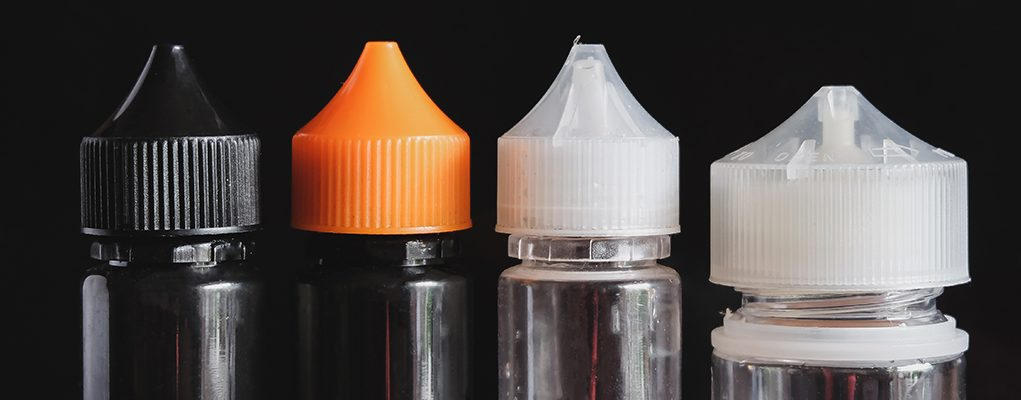
After witnessing some level of success in decreasing smoking rates by implementing plain packaging laws on cigarettes, researchers and authorities are starting to consider similar requirements for vaping products. Is this a good idea?
New research from the University of Stirling, looked into ways vape packaging could be designed to motivate smokers to switch to vaping, while deterring young non-smokers from starting. Titled, “The role of e-cigarette packaging as a health communications tool: A focus group study with adolescents and adults in England and Scotland,” the study was funded by Cancer Research UK, and published in Nicotine & Tobacco Research.
The study participants consisted of 31 young people (11-17 years old) and 39 adults, across England and Scotland. Among other things, the research team examined the respondents’ perceptions of current warning messages on vape packaging, while evaluating the effectiveness of alternative messages.
The study reported that while current nicotine addiction warnings increased awareness, they generally failed to capture attention or deter vaping. Participants suggested that packaging could be improved to reduce its appeal to young people and non-nicotine users. They proposed larger warnings, plain packaging, and placing warnings on the devices themselves to increase exposure.
Most view current vape warnings merely as formalities required by law, with no real impact on users
Through focus groups, the researchers found that the respondents were sceptical of the current nicotine addiction warnings, viewing them as mere legislative formalities. Instead, they found that different warnings, particularly those highlighting relative risk—such as “Completely switching to e-cigarettes is a healthier alternative to smoking”—could effectively encourage smokers to switch. However, the participants added that such messages could possibly also entice non-nicotine users to start vaping.
The study respondents reviewed mock-up vape packaging with various alternative messages addressing harm, relative risk, toxicity, litter, and wellness. The study concluded that packaging and labelling need to be optimized in order to prevent uptake among young people and non-nicotine users, while still encouraging smokers to switch to vaping.
Coincidentally, only last week the Dutch Cabinet announced new plain packaging requirements for vaping products, to match the current ones on cigarettes, with the aim of reducing the attractiveness of the products to young people. However, the World Vapers’ Alliance (WVA) has voiced significant concerns regarding this decision, arguing that it fails to recognize the crucial differences between vaping and smoking, potentially misleading consumers about the relative risks of each.
The general consensus among public health experts
WVA Director Michael Landl, emphasized that genuine protection for youth lies in education and creating fulfilling lives. Surveys consistently indicate that teens are more likely to engage in risky behaviors, including vaping, when they face challenges such as academic issues, health problems, or poverty. Landl highlighted that packaging plays only a minor role in the initiation of such behaviors. He argued that to genuinely safeguard youth, efforts should focus on improving education, healthcare, and economic conditions. However, he added, because such solutions are complex and demanding, politicians tend to resort to sensational but ineffective measures that fail to address the root causes of the issue.
Experts in the field have consistently argued that while the intention to prevent youth vaping is honourable, it is crucial to balance this with facilitating smoking cessation for adults.
Comprehensive education and supportive environments are key to effective youth protection, rather than conflating vaping with smoking through uniform packaging laws.
Expert Clive Bates does not believe that vape manufacturers are intentionally and specifically targeting minors
Vaping Post contacted public health and tobacco harm reduction (THR) expert Clive Bates, for an expert opinion on the possible advantages and disadvantages of plain packaging for vapes. “The first thing to say is that I don’t think any manufacturers are seriously targeting teenagers with packaging; the adult market for nicotine products is almost twenty times the size and a far greater opportunity. But there are cases where frivolous or edgy packaging and branding designed to appeal to certain adults might spill over into appeal to adolescents. That’s the problem we need to tackle.”
Echoing the opinions of different stakeholders, the THR expert highlighted that of course more can, and needs to be done, to ensure vape packaging is not appealing to youngsters. “I do agree that some control on packaging and branding should form part of a strategy to reduce youth uptake of vaping. But this should concentrate on eliminating youth-appealing images, cartoons, trademarks, flavour descriptors, and other unnecessary gimmicks in the packaging. This would be an extension of the principles that we already have in the UK for controls on advertising under the Committee on Advertising Practice Code for e-cigarettes, but applied to packaging and branding, too. The packaging and branding need to be stylish enough to attract smokers, but we need the packaging to be more sedate.”
“I do agree that some control on packaging and branding should form part of a strategy to reduce youth uptake of vaping. But this should concentrate on eliminating youth-appealing images, cartoons, trademarks, flavour descriptors, and other unnecessary gimmicks in the packaging….. The packaging and branding need to be stylish enough to attract smokers, but we need the packaging to be more sedate.”Clive Bates
Nonetheless, in line with Landl’s arguments, Bates emphasized that subjecting vapes to the same packaging requirements as cigarettes, would send the wrong message. “However, I definitely would not go as far as plain packaging. There is a real danger that users will see it as an implicit risk communication. If vapes are subject to the same packaging restriction as cigarettes, wouldn’t it be logical to assume that the authorities believe vapes must be as dangerous as cigarettes? Yet that is very far from the case. It would only take a few people not switching from smoking to vaping, or relapsing from vaping back to smoking because of confusion over risk, for the plain packaging measure to do more harm than good,” he concluded.
